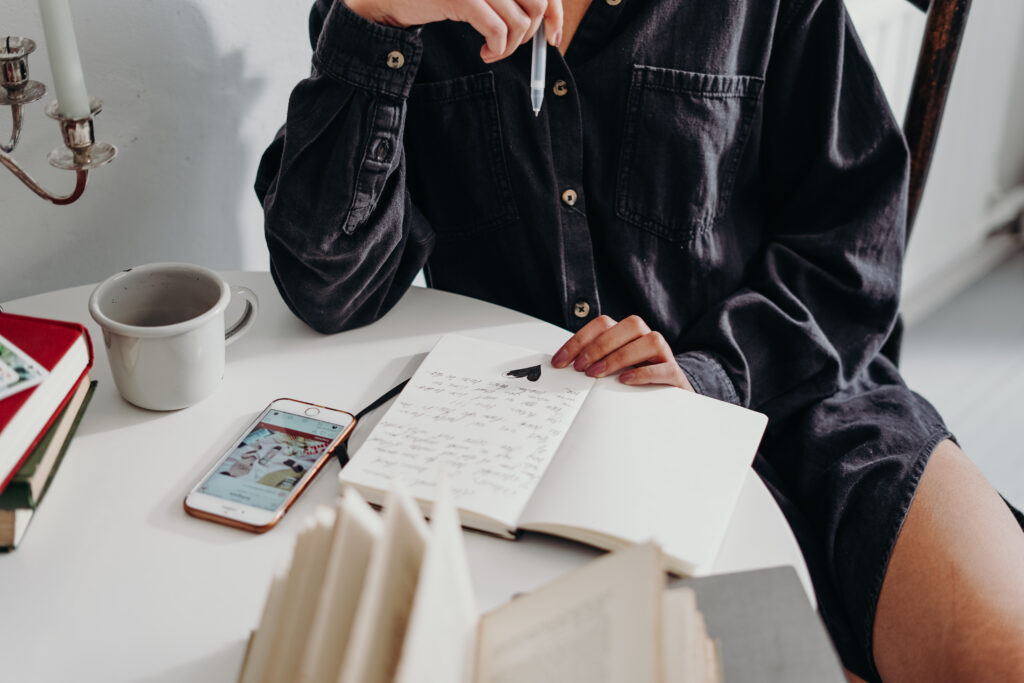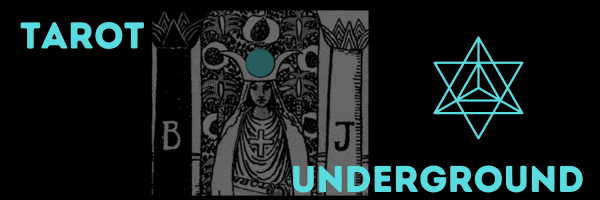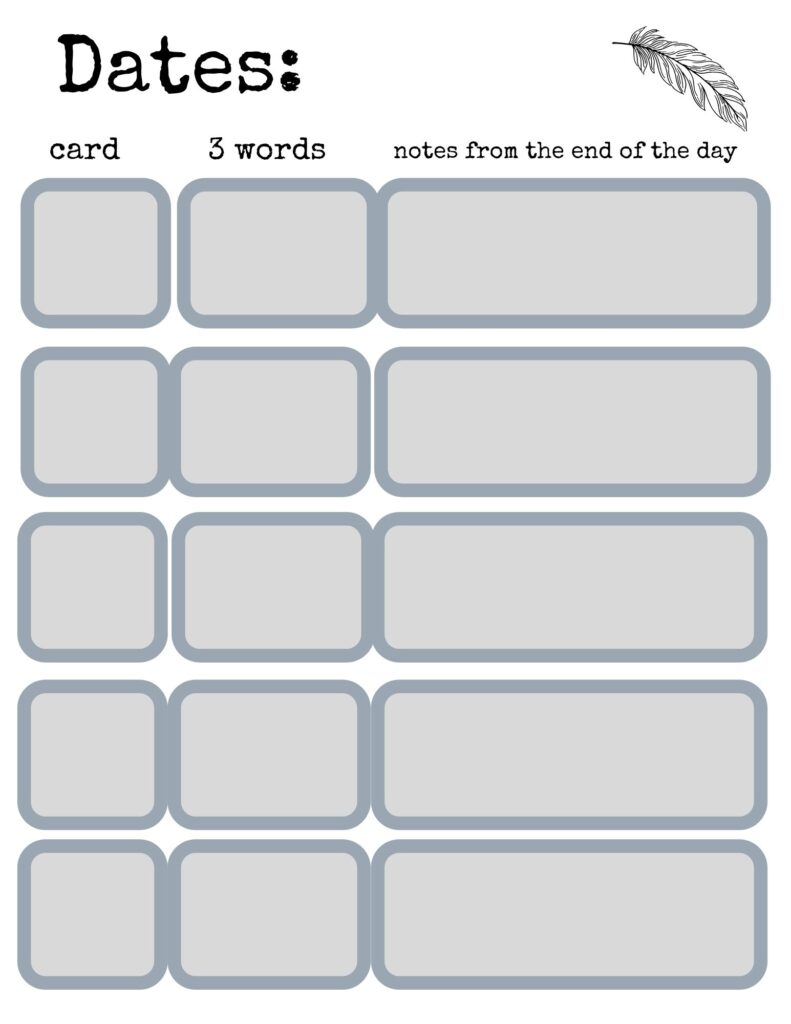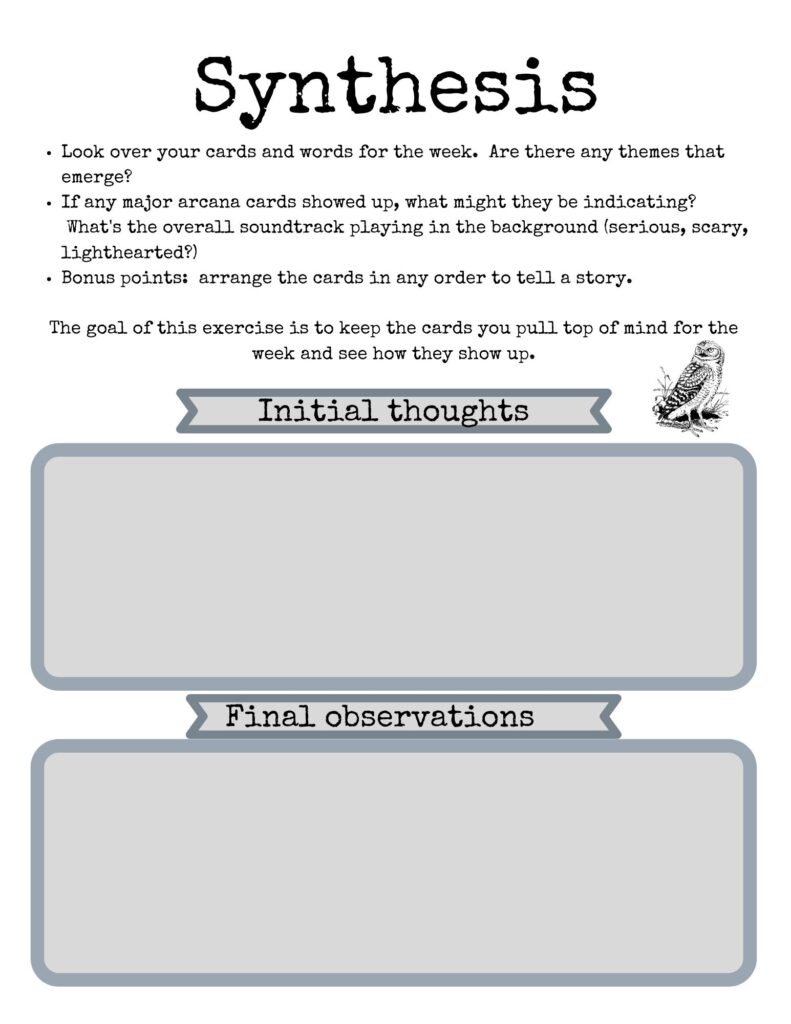
Have you tried pulling a card a day?
How did it go?
The purpose of the daily tarot draw is to give you a card to reflect on for the day ahead. But what if there was more to the Tarot card of the day besides your mood or how you felt on the inside?
What if by pulling a card a day you were letting the cards speak to you and train you in their many layers of meaning?
Try this method and see if you daily Tarot draw doesn’t become more satisfying and oh so much more informative.
How to do a daily Tarot Draw step by step
- Download the worksheets or dedicate a few pages in your journal.
- Pick a range of dates and pull a card a day for each day. Go ahead and pull all the cards so you don’t get busy and forget.
- Pick 3 words or short phrases for each card and fill in the box. These words can come from anywhere, what comes to mind, what is pictured on the card, definitions online etc. Don’t even entertain being right at this point.
- At the end of the day go back and fill in what happened during the day. How can you connect the card of the day? Some days it will be obvious. Some days it won’t. Don’t worry about it. Just do it and let the cards talk to you.
What to watch for with the card of the day
Think of the small handful of cards you drew for the week as a mini-spread. What’s the story here? What is the overall theme? Is there a predominance of suit or multiple major arcana cards?
Try shuffling those cards and laying out in a spread of your choice. How does it look from that angle?
Back to the day to day, use your daily card to try to identify the mundane, day to day events. Not every day is earth shattering and neither is every Tarot card reading. At the end of the day, during your reflection period see if you can spot the mundane events in the card you pulled. Was the weather bad, did a co- worker miss work, did somebody tell a good joke, did you notice your plants wilting?
I repeatedly say Tarot is a language. When you are learning a new language, you paint with broad strokes first and then begin to learn the nuances. Continue to listen to the cards. They are speaking to you.


